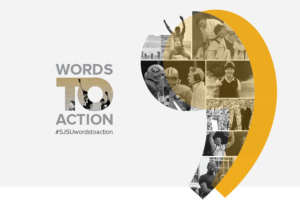 by David Greig, Development Director
by David Greig, Development Director
ParaSport Spokane
Media engagement is critical to the success of community-based para sport programs. A compelling story on the news can engage a broader audience and draw in potential support in the form of sponsors and donors. Viewers may relate to the content and approach potential members for the organization to serve as a recruiting and awareness tool. However, a poorly positioned piece that is off base in approach, language and messaging can be just as off-putting and serve to discourage new participants.
Organizations can utilize a few simple tactics to help create strong ties within the local media, including:
- Engaging media interest and education: Should a media outlet reach out and show interest in your program, provide them with information links to YouTube videos about the Paralympic movement and keep them informed of what you are doing and who the personalities are within your program. Celebrate, recognize and identify those media ambassadors who are doing appropriate work.
- Directing the conversation: When contacting the media, be deliberate in positioning the story as a sports-focused piece, emphasize the athlete first, the rigors of training, how sophisticated the technology is and how big the global Paralympic movement is. Provide a list of keywords, technical phrasing and links to resources to build greater knowledge and appreciation. Here’s an example of a news story that integrates solid messaging, clear language and terminology, and strong alignment with the Paralympic brand.
- Learning to pivot: A tactic done well by politicians, the pivot is a simple tool used to redirect a line of questioning. Should they ask a question that you find less appropriate for the topic at hand, an example of a pivot is to say, “That is a great question, but our experience is that people are more interested in…” When you state your objectives up front by positioning a story as a sport-focused piece where the athlete comes first and the disability is secondary to what the subject is doing athletically, you’ve created the opportunity to re-focus the line of questioning.
- Educating your membership: Often, family members and athletes use the term “Olympics” instead of “Paralympics” (here’s an example of a recent news story that fails to use the term “Paralympics” entirely). We are part of the Paralympic system. We are responsible for informing the general public, and it starts with our members using the correct language. Continually emphasize this and be deliberate to correct anyone that slips up. Globally, the Paralympic sport brand is very strong. Although it is growing in the USA, we need to be the catalyst for brand recognition via our programs. Yes, we align with the Olympic movement, but we are parallel to it and proud of how we are distinct.
No one wants the cringe-worthy media story to come from their hometown or event. Engaging and educating media, building savvy media ambassadors and being deliberate about language and approach are all strategies to employ as an organization.

